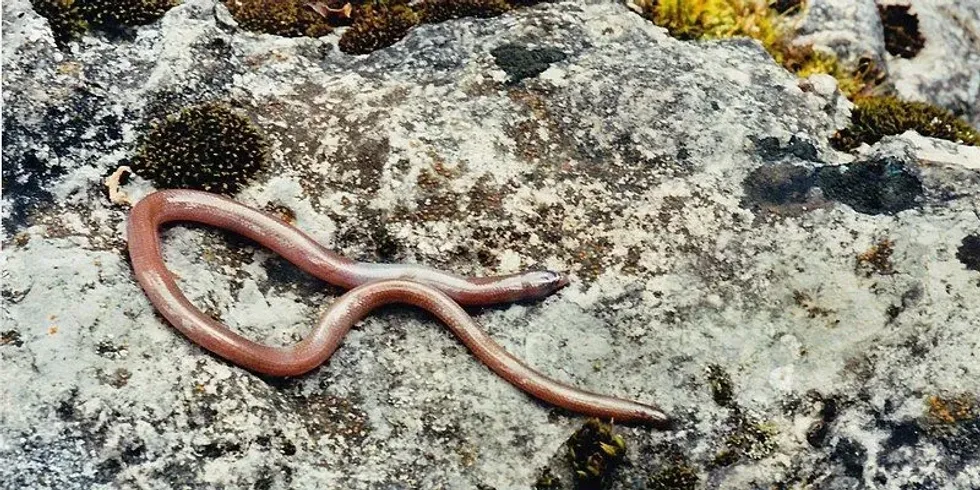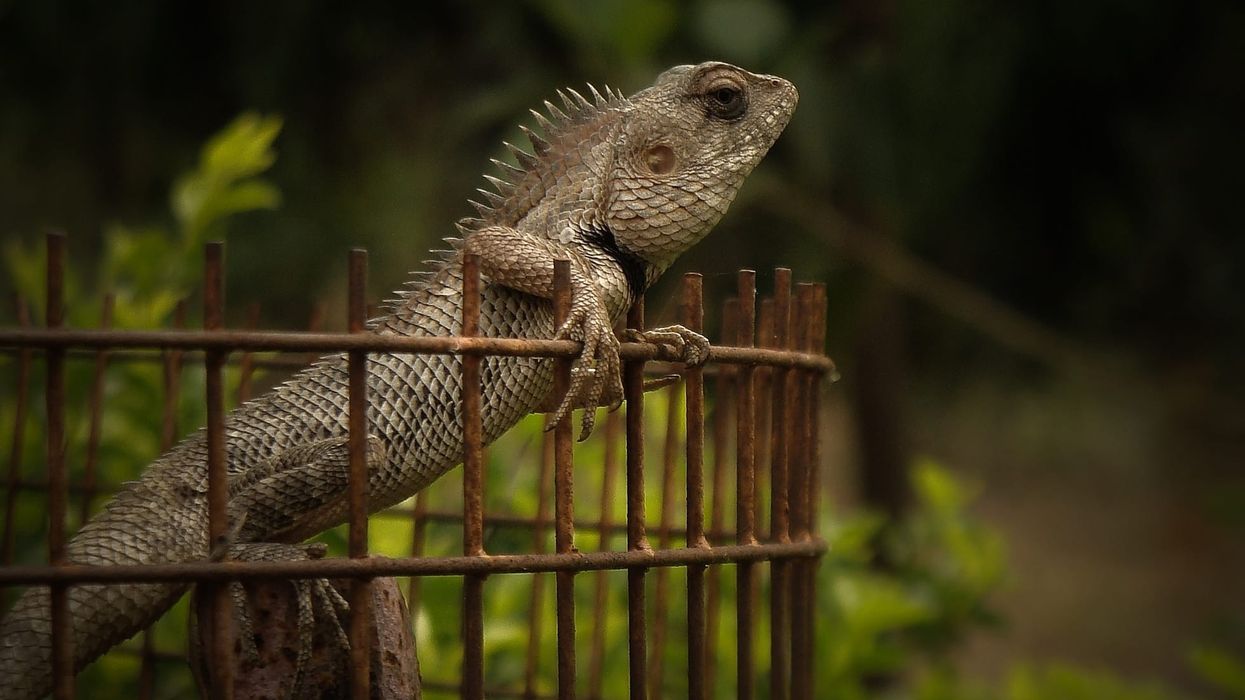Dibamidae is a family of lizards known for their legless, worm-like, elongated, cylindrical bodies and lack of limbs. They were first introduced and described by George Albert Boulenger, a Belgian-British zoologist in 1884.
They are also known as blind snake lizards, blind legless lizards, and legless lizards.
Dibamidae is further divided into two genera - Dibamus and Anelytropsis. Dibamus has around 23 species and they are all native to the Philippines, western New Guinea, Indonesia, and other regions of Southeast Asia.
Whereas, Anelytropsis is monotypic and native to Mexico.
Recent results of research and studies in phylogeny have classified Dibamus as the clade closely related to other snake and lizard species, as they share a common ancestor with the infraorder, Gekkota. Gekkotans evolved into geckos with bright colors, sticky feet, and other unique characteristics.
While this small reptile evolved to have a long, lean and slender body, losing its legs to make burrowing into the soil easier.
Female dibamids can be identified easily as they are completely limbless, whereas males have short hind limbs, which they use to hold their partners while mating (these limbs can be considered as immature blind lizard legs).
Both sexes have a firm or rigid skull, external ears are absent, and the eyes are covered with scales, a wide and long tongue with an undivided tip.
Learn about some other reptiles from our monitor lizard facts and lava lizard facts pages.
Blind Lizard Interesting Facts
What type of animal is a blind lizard?
A blind lizard or legless lizard just like its name suggests is a lizard belonging to the Animalia kingdom.
What class of animal does a blind lizard belong to?
Blind lizards belong to the Reptilia class and are often confused with snakes who are placed under the same class.
How many blind lizards are there in the world?
The accurate population size is unknown, but these legless creatures are common in their range.
Where does a blind lizard live?
The Dibamidae distribution is divided and occurs according to its two genera, with the monotypic Anelytropsis genus living in Northern Mexico, and the other- Dibamus, occupying Southeast Asia.
Biogeographical studies have proved that the geographical separation between the two genera, especially the Dibamus species that are distributed in continental Southeast Asia occurred approximately 70 million years ago during the Late Cretaceous.
What is a blind lizard's habitat?
These underground-dwelling creatures are found in forests, wetlands, grasslands, marshes, and have a wide altitudinal range.
They are also found in rocky, muddy, and moist regions with temperate climatic conditions.
Even though this blind reptile looks like a snake, it is a lizard that has evolved and modified its body parts to live underground by burrowing into the soil, to put it simply losing its legs enabled it to easily move through the earth by wriggling its body.
Legless lizards also inhabit homes and underground tunnels built by other insects such as moles and termites.
Who do blind lizards live with?
Blind lizards are solitary and live alone, but pair up temporarily to mate.
How long does a blind lizard live?
A legless lizard has an average life span of 20 years but can live up to 28-30 in captivity.
How do they reproduce?
These lizards have not been researched well to provide details regarding their breeding habits. But of course, we will help you with any information that is available, including the fact that these creatures lay eggs, and these eggs have hard calcified shells, rather than the glossy and leather-like appearance of other reptile eggs.
The male and female members usually intertwine their bodies while mating.
What is their conservation status?
Dibamidae is a fairly large group and most of its members are listed as species of Data Deficient by the International Union for Conservation of Nature (IUCN). However, two species i.e. Dibamus kondaoensis and Dibamus tiomanensis have been listed as Nearly Threatened and Endangered species respectively.
Blind Lizard Fun Facts
What do blind lizards look like?
Dibamids have snake or worm-like brown-purple bodies, with a rounded head, a tail, no limbs, and are covered with smooth, shiny, and plate-like scales. Scales are relatively larger on the head, snout, lower jaws, and near the nose.
The smallest dibamid, from its head to tail can grow up to 9.8 in (24.8 cm) in length. They do not have elaborate patterns or any markings and look bland with little to no color variation.
Males are generally and thicker and longer than females.
General characteristics include soft tissues, modified legs, ears with no eustachian tubes, cavity or external openings, heavily reduced eyes covered by a scale, with improper internal composition. To distinguish a dibamid from a snake you must pay close attention to its tongue, as its tongue does not have a divided tip like a snake.
How cute are they?
These snake-like creatures are considered cute by some people because of their slender bodies and small size.
How do they communicate?
They use tactile communication (physical actions, by indirect and direct touch) to communicate, share and receive information from each other and their surroundings.
How big is a blind lizard?
A blind lizard can grow up to 30-45 in (76.2-114.3 cm) in size. An Orinoco crocodile is nearly 40 times bigger than a blind lizard!
How fast can a blind lizard move?
The speed rate of this reptile is unknown. However, it has an incredible speed when burrowing into the soil, and given that it has a small and slender body it probably moves really fast.
How much does a blind lizard weigh?
An adult blind lizard weighs about 11-21 oz (311.8-595.3 g).
What are the male and female names of the species?
These reptiles do not have separate names for their male and female species. They are simply denoted as males and females.
What would you call a baby blind lizard?
A baby blind lizard is called a hatchling or neonate.
What do they eat?
Blind lizards are limbless reptiles who burrow through the earth and hunt on anything they find below the surface. Their diet mainly consists of small insects and invertebrates.
These reptiles are often hunted and preyed upon by various birds and snakes, which is quite ironic as they are compared to snakes all the time!
Are they poisonous?
They are not poisonous, but a bite from them may cause an infection and can be painful.
Would they make a good pet?
Some members of this family make excellent pets as they are docile, peaceful, and friendly. Whereas some larger and aggressive ones may not make the best pets.
Did you know...
Smaller members are often mistaken for earthworms.
These reptiles look a lot like Amphisbaenia but are only distantly related.
A blind lizard is sometimes referred to as a two-headed snake because people have a hard time distinguishing between its head and tail.
Are they blind?
Yes, they are. In fact, all are limbless burrowers are partially or completely blind.
Do they have legs?
No, just like the name suggest they are legless lizard species.
Here at Kidadl, we have carefully created lots of interesting family-friendly animal facts for everyone to discover! For more relatable content, check out these sand lizard facts and gila monster facts for kids.
You can even occupy yourself at home by coloring in one of our free printable lizard mask coloring pages.










